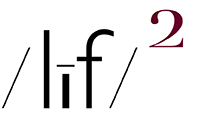(embiggenable) • iPhone
(embiggenable) • iPhone
(embiggenable) • iPhone
RE: NARROW DOF - THE PORTRAIT MODE ON THE iPHONE.
While the PORTRAIT mode is not "perfect" inasmuch as it has, amongst a few other minor quibles, a limited plain of focus range within which it works. As an example, I most often get the Place subject within 8 feet warning when using the PORTRAIT mode. That's cuz I do not often use the PORTAIT mode for making actual portraits.
Consequently, as in the case of the motorcyle picture, the PORTRAIT "effect" was not applied - the motorcycle-the focus point-was well outside of 8 feet. Which required that I create a narrow DOF look in Photoshop (it ain't rocket science).
Conversely, when making a portrait, as in the case of the beer drinker (my son) picture, the PORTRAIT mode works quite nicely, and, it gives me the ability to select the amount of DOF-via a simulated aperture setting-during post-shoot processing. FYI, that simulated aperture setting is not permanent. It can be adjusted at any time.
Another nifty thing that can be done with the PORTRAIT mode is "correcting" mis-focus. Consider the case of the paper towels picture...
...my point of focus was on the frontmost roll. In processing (on the iPhone), when I got the DOF look I liked, the rearmost roll was out of focus. So, I saved the image file with my desired DOF-albeit with the back roll out of focus-then (on the iPhone) I re-processed the image file to get the rearmost roll in focus and saved-with a new name-that file.
The next processing step (in Photoshop) was to cut/select the 2 in-focus paper towel rolls from the image file in which they were both sharp and paste that selection into the image file with my desired DOF. Viola, an image file with my desired DOF with both paper towel rolls in focus...a composit picture made from the same image file with different aperture/DOF settings.
All in all, easy-peasy. And, I might add, try getting that from a "real" camera with just 1 click of the shutter.
PS Kinda makes me wonder what Gordon Parks might have thought, re: this technology and how he might have used it. Although, this quote from Parks might contain a hint (inasmuch as, to my eye and sensibilities, I have always thought / felt that narrow DOF conveys a sense of dreamy-ness):
"...I have felt like a wayfarer on an alien planet at times — walking, running, wondering about what brought me to this particular place, and why. But once I was here the dreams started moving in, and I went about devouring them as they devoured me.
picture by Gordon Parks ~ (embiggenable)



